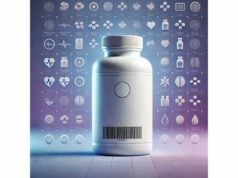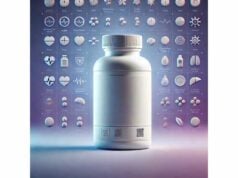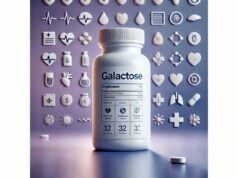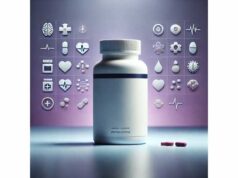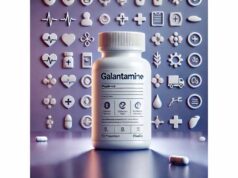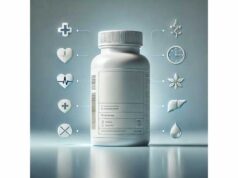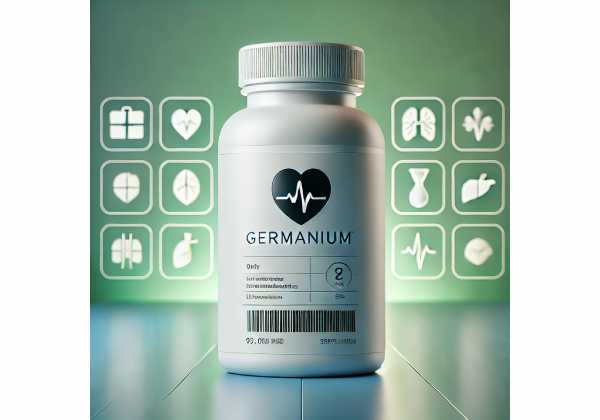
Germanium is a metalloid best known for its role in electronics—not for human nutrition. Yet “organic germanium” capsules and liquids have circulated for decades, promoted for immunity, energy, pain, and even cancer. The reality is more complicated. Germanium is not an essential nutrient, and several inorganic forms have caused severe, sometimes fatal, kidney damage when taken chronically. Even products labeled “organic germanium” have raised concerns about contamination and inconsistent purity. This guide explains what germanium is, how it’s marketed, what the evidence actually shows, where safety risks arise, and why many regulators discourage or restrict its use. If you’re considering germanium for immune support or any other purpose, you’ll find practical decision points here—plus safer, evidence-backed alternatives to achieve similar goals without gambling on a controversial ingredient.
Key Insights
- Evidence for immune benefits exists mainly as small or preliminary studies; no proven disease outcomes.
- Significant kidney risk reported with inorganic forms; purity and mislabeling remain concerns.
- No safe consumer dose established; recommended personal intake is 0 mg/day.
- Avoid if pregnant, breastfeeding, under 18, or with kidney disease or on nephrotoxic drugs.
Table of Contents
- What is germanium in supplements?
- Does germanium provide real benefits?
- How forms and products differ
- Mistakes and red flags to avoid
- Safety, side effects, and who should avoid
- Dosage questions and safer alternatives
- What research and regulators say today
What is germanium in supplements?
Germanium is a naturally occurring element (symbol Ge) used industrially in semiconductors, fiber optics, and infrared optics. In biology, its role is far less clear. It is not recognized as essential for humans, and no deficiency syndrome has been identified. People ingest tiny amounts from food and water, but these trace levels are not linked to known health needs.
Supplement marketers usually talk about two broad categories:
- Inorganic germanium (e.g., germanium dioxide, “germanium oxide,” or salts like lactate–citrate). These are more water-soluble mineral forms. Chronic use has been linked to renal tubular injury and neurologic symptoms in humans.
- “Organic germanium”—a marketing umbrella for carbon-containing molecules that include germanium. The best-known is bis-carboxyethyl germanium sesquioxide (often written Ge-132 or “CEGS”). Some manufacturers also sell germanium-fortified yeast or protein-bound forms. These products are promoted as safer or “natural,” but safety depends on purity, dose, and long-term exposure—factors that vary widely outside controlled labs.
Why did germanium ever enter the wellness market? In the 1970s–1990s, lab and animal studies hinted at immune modulation (changes in natural killer cell activity, cytokines, and macrophage function). This led to early, small human experiments and many unsubstantiated health claims. Over time, case reports of kidney failure with inorganic products—and uncertainty about the content and purity of retail “organic” products—shifted the risk–benefit equation solidly toward caution.
Key takeaways at this stage:
- Germanium is not a required nutrient.
- Product labels can be misleading; “organic” does not guarantee safety or purity.
- Historical harms came from inorganic forms and from impurity or misidentification in consumer products.
If you’re evaluating a supplement primarily for immune support or energy, it’s better to understand mechanism claims (like “oxygenation” or “detox”) as marketing shorthand rather than established clinical effects. The sections below unpack what evidence exists and where the safety gaps remain.
Does germanium provide real benefits?
Short answer: There is no high-quality clinical evidence that germanium improves survival or disease outcomes in humans for cancer, infections, arthritis, or chronic fatigue. A few newer studies suggest immune-profile changes (for example, modest increases in natural killer cell activity in healthy adults over several weeks), but these findings don’t demonstrate better clinical outcomes, and they leave open questions about durability, responders vs. non-responders, and long-term safety.
What the research base looks like:
- Immune modulation signals. Some controlled trials with certain branded “organic germanium” preparations report changes in immune markers (e.g., natural killer cell activity, IgG subclasses) over 6–8 weeks. These are surrogate endpoints, not clinical outcomes such as fewer infections or better recovery.
- Cancer and chronic disease claims. Older, small studies and uncontrolled series drove much of the enthusiasm decades ago. Later analyses found inconsistent methods, biased reporting, or non-replication. Contemporary oncology practice does not include germanium as supportive care or antitumor therapy.
- Animal and cell data. Laboratory models describe antioxidant effects and shifts in immune signaling pathways. These models are hypothesis-generating; they rarely predict human clinical benefit on their own.
- Safety trade-offs. Any marginal immune changes must be weighed against real-world risks: mislabeling, contamination with inorganic germanium, and kidney injury with chronic intake.
The absence of proven benefit does not mean no biological activity. Rather, it means the clinical value proposition is unproven, and the risk of harm—particularly from non-pharmaceutical-grade or misbranded products—outweighs speculative gains for most people. For common goals like “fewer colds,” “more energy,” or “less pain,” other strategies have far better evidence and safety profiles.
Bottom line: If you’re looking for a supplement that reliably improves immune resilience or energy, germanium is not a strong candidate. Any potential immune-marker effects are preliminary and do not translate into established, meaningful health outcomes.
How forms and products differ
Understanding the form is essential, because most severe harms trace to what was ingested:
- Inorganic forms (e.g., germanium dioxide, lactate–citrate salts): These have been implicated in renal tubular damage and neurological symptoms with chronic use, even at doses the sellers described as “within recommendations.” Risks rise with cumulative dose and duration. Because these compounds are soluble, they circulate and accumulate in tissues, including the kidney.
- Ge-132 (bis-carboxyethyl germanium sesquioxide): Marketed as “organic germanium.” Laboratory and animal toxicology suggests a different profile from inorganic salts when the material is highly purified. But consumer-level realities complicate that picture: some retail products have historically contained inorganic germanium or failed to meet purity specifications, blurring the line between “organic” and risk.
- Protein-bound or yeast-based germanium: These “bio-germanium” formats claim tighter binding and cleaner elimination. A few modern trials report immune-profile changes over weeks with no short-term laboratory toxicity signals. However, long-term human safety and batch-to-batch manufacturing controls outside clinical trials remain unclear.
Label translation tips:
- “Organic germanium,” “Ge-132,” “CEGS,” or “carboxyethylgermanium” are often used interchangeably. None guarantees pharmaceutical-grade purity.
- “Germanium oxide,” “germanium dioxide,” or “mineral germanium” signal inorganic forms—do not use.
- “Detox germanium,” “oxygen optimizer,” or “immune elixir” are marketing phrases, not scientific categories.
Why contamination matters: Even tiny inorganic impurities can accumulate with daily intake. Chronic kidney injury often developed after months of use with total cumulative intakes reaching tens to hundreds of grams. Because exposure is cumulative, a “low” daily dose doesn’t ensure safety over time.
If you ever encounter germanium on a label of a multicomponent “immune” product, assume meaningful uncertainty about form and purity unless the manufacturer provides independent, lot-specific analytics (e.g., validated assays confirming absence of inorganic germanium) and clear clinical-grade documentation. In real-world markets, that standard is rare.
The conservatively safe choice remains simple: avoid germanium-containing supplements altogether.
Mistakes and red flags to avoid
Because germanium’s marketing often leans on hopeful narratives, it’s easy to trip into risky territory. These are the most common pitfalls:
- Equating “organic” with “safe.” “Organic” in chemistry means “carbon-containing,” not “harmless.” Safety depends on purity, dose, duration, and the exact molecule—and on what else is in the bottle.
- Believing “detox” or “oxygenation” claims. There’s no accepted clinical definition behind these phrases in the context of germanium supplements. Mechanistic speculation isn’t the same as proven benefit.
- Ignoring cumulative exposure. Even modest daily intakes can accumulate over months. Several historical cases of renal failure involved prolonged use at labeled doses.
- Buying from informal marketplaces. Counterfeits and misbranded items are a persistent problem. When regulators flag an ingredient class, import alerts and detentions often follow—meaning some products never meet baseline quality expectations.
- Stacking with other stressors. Dehydration, high-dose NSAIDs, certain antibiotics, lithium, or other nephrotoxic agents can compound kidney risk.
- Using for serious diagnoses. Replacing effective treatments with germanium has no evidentiary support and can delay care.
Skeptic’s checklist before you consider anything labeled “germanium”:
- Form clarity: Does the label unambiguously name the compound (e.g., Ge-132) and exclude inorganic germanium?
- Independent testing: Are there lot-specific, third-party certificates proving no inorganic contaminants?
- Clinical relevance: Are any cited studies human trials with clinical outcomes (not just immune markers) that match your goal?
- Regulatory posture: Has the product been subject to regulatory warnings, detentions, or recalls?
If you can’t answer “yes” to all four, the safest move is to walk away and explore alternatives with established efficacy.
Safety, side effects, and who should avoid
Primary risk: Kidney toxicity (renal tubular injury leading to renal failure) with inorganic germanium and with misbranded or contaminated products. Reports describe slow, sometimes incomplete recovery even after stopping. Several cases ended in end-stage kidney disease or death. Chronic exposure—weeks to months—was a common pattern.
Other reported effects include:
- Neurologic symptoms: Peripheral neuropathy, gait disturbance, sensory changes.
- Hematologic findings: Anemia or changes in blood counts in some reports.
- Gastrointestinal effects: Nausea, diarrhea, abdominal discomfort at higher intakes.
- Non-renal organ signals: Isolated lung or muscle complaints have been described, though kidney injury dominates the risk profile.
Drug and condition interactions (high concern):
- Existing kidney disease or reduced eGFR: Absolute avoid.
- Medications with renal impact: NSAIDs (e.g., ibuprofen at high, chronic doses), aminoglycosides, certain antivirals, amphotericin B, lithium, cyclosporine, tacrolimus. Combining potential nephrotoxins is risky.
- Diuretics and ACE inhibitors/ARBs: Monitor kidney function carefully with any supplement that can alter renal handling—better, avoid germanium.
- Pregnancy and breastfeeding: No acceptable safety margin; avoid.
- Children and adolescents: Avoid due to narrow safety margins and unknown long-term effects.
- Autoimmune disease or immune-modulating therapy: Theoretical immune shifts may be undesirable or unpredictable.
Signs to stop immediately and seek care:
- New fatigue, loss of appetite, nausea, vomiting, swelling, decreased urine output, tingling or numbness, or unsteady gait—especially if taking a product labeled with germanium. These may be early kidney or neurologic warning signs.
Laboratory monitoring if exposure occurred:
- Serum creatinine, BUN, eGFR; urinalysis for tubular dysfunction; consider electrolytes, complete blood count, and—if clinically indicated—renal imaging or nephrology consult. Chronic accumulation can occur; a normal one-time lab doesn’t guarantee safety.
Given the history of serious harm, most clinicians recommend complete avoidance of germanium supplements. There is no established benefit that justifies the risk outside tightly controlled clinical research using verified, highly purified materials.
Dosage questions answered and safer alternatives
Is there a safe dose? For consumer use, no. There is no established safe intake that balances risk and benefit for the general population. Historical product labels ranged widely (tens to thousands of milligrams per day), and harms accumulated over time with inorganic forms or impure products. Because retail purity cannot be guaranteed and long-term human data are lacking, the recommended personal intake is 0 mg/day.
What if a study used a dose that looked “safe”? Animal toxicology can tolerate very high amounts of certain purified materials for weeks to months without obvious harm. That does not translate to real-world safety, where products vary, lots can be contaminated, and people take them for years alongside other medications. A short-term trial showing immune-marker shifts does not validate daily, long-term supplementation.
If I already took it—now what?
Stop the product, save the bottle, and contact your clinician. Ask about checking serum creatinine, eGFR, and urinalysis. If you have symptoms (fatigue, swelling, reduced urine, tingling, unsteady gait), seek evaluation promptly. Do not “flush your kidneys” with extreme hydration or diuretics on your own.
Better, safer alternatives to match common goals:
- Immune support:
- Sleep (7–9 hours), exercise, vaccination, and hand hygiene offer the largest real-world effects.
- If supplementing, consider vitamin D within recommended daily allowances based on baseline status, and zinc only at modest doses for short durations during acute illness—both have clearer evidence and defined upper limits.
- Energy or fatigue:
- Identify and treat underlying causes (iron or B12 deficiency, sleep apnea, thyroid conditions, medications).
- Consider creatine monohydrate for physical energy in active adults; caffeine in moderate, timed doses; rhodiola or ashwagandha only if appropriate and after reviewing drug interactions.
- Joint comfort or general inflammation:
- Topical NSAIDs (for localized osteoarthritis), physical therapy, weight management, and—when appropriate—omega-3 fatty acids with defined EPA/DHA dosing targets.
Cost perspective: Germanium products are often expensive. When the best-supported dose is 0 mg/day, any spend is a sunk cost with negative value if it displaces safer, proven options.
What research and regulators say today
The scientific literature on germanium has two parallel threads:
- Toxicology and case reports. Since the 1980s, multiple human cases have linked chronic germanium intake—predominantly inorganic forms—to progressive kidney damage and occasional neurologic toxicity. Recovery was often partial or slow, emphasizing accumulation and persistence. These reports underpinned regulatory caution.
- Modern laboratory and selected clinical studies with certain “organic germanium” formats report immune-marker changes (e.g., increased natural killer cell activity) in healthy adults over weeks and favorable short-term lab safety signals. These data explore mechanisms but do not establish disease-level benefits or long-term safety across diverse products.
Regulatory posture reflects the totality of evidence and the real-world manufacturing landscape:
- Import detentions and warnings: In recent years, authorities have flagged germanium supplements as presenting public health risks, particularly for nephrotoxicity and misbranding.
- Compounding risk listings: Some agencies list germanium sesquioxide as a bulk substance of significant safety concern—citing risks of contamination with inorganic forms and reports of kidney injury.
- Not an essential nutrient: No governmental nutrition guideline includes germanium as an essential mineral or recommends daily intake.
What this means for you:
- Even if a single, highly purified preparation shows neutral short-term lab results in a trial, that does not validate the category for consumer use.
- The risk asymmetry is stark: best-case benefits are uncertain and surrogate-based, while harms (if exposed to the wrong form or impure product) can be severe and lasting.
- Until robust, long-term, independently replicated human trials show clear clinical benefits with strictly verified materials, avoidance remains the safest, most evidence-aligned strategy.
References
- Import Alert 54-07 2025
- Certain Bulk Drug Substances for Use in Compounding that May Present Significant Safety Risks | FDA 2025 (Guideline)
- A Toxicological Evaluation of Germanium Sesquioxide (Organic Germanium) 2020
- Hazard assessment of germanium supplements 1997 (Systematic Review)
- Immune activation of Bio-Germanium in a randomized, double-blind, placebo-controlled clinical trial with 130 human subjects: Therapeutic opportunities from new insights 2020 (RCT)
Disclaimer
This article is for general information and education. It is not medical advice and does not replace consultation with a qualified healthcare professional. Do not start, stop, or change any medication or supplement based on this content. If you have symptoms or health concerns, seek personal medical care.
If you found this helpful, please consider sharing it with friends or colleagues on Facebook, X (formerly Twitter), or any platform you prefer, and follow us for future evidence-based guides. Your support helps us continue creating high-quality, trustworthy content.

